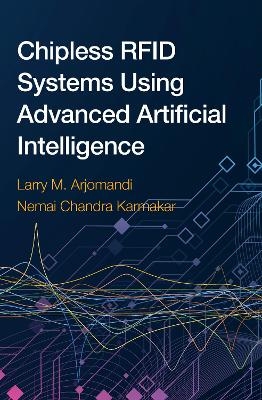
Chipless RFID Systems using Advanced Artificial Intelligence
Artech House Publishers (Verlag)
978-1-63081-948-4 (ISBN)
Chapter 1 Introduction
1.1 The overview model of RFID
1.2 Different types of RFID
1.3 Different types of chipless RFID
1.4 Market aspects for chipless RFID
1.5 RFID frequency spectrum
1.6 Challenges in implementing chipless RFID in mm-wave spectrum
1.7 Book outlines
Chapter 2 Chipless Tag Design
2.1 Introduction
2.2 Chipless RFID tags
2.2.1 Time-domain tags
2.2.2 Frequency-domain tags
2.2.3 Image-based tags
2.2.4 Letter-based tags
2.2.5 Screen printing for the chipless tags
2.2.6 Screen printing experimental observations
2.3 Letter-based Tag Design
2.3.1 Effect of substrate on backscattered signal
2.3.2 Encoding capacity considerations
2.3.3 Tag design based on Peyote alphabet
2.3.4 Peyote tag frequency response
2.4 Backscattering theory and Radar Cross Section (RCS) calculations
2.5 Tag performance simulations
2.5.1 Tag design improvement
2.5.2 Discussion of the results
2.6 Tag response measurements
2.7 Conclusions
2.8 Tag design, friendly questions and answers
Chapter 3 Chipless Reader Design
3.1 Introduction
3.2 Chipless RFID readers
3.2.1 Frequency-based readers
3.2.2 Image-based readers
3.3 60 GHz System block diagram
3.3.1 Maximum reader power and link budget calculations
3.3.2 Maximum reading distance calculations
3.4 60 GHz Tx/Rx boards
3.5 Designing and Integration: RF, IF, controller and peripheral circuits
3.5.1 60 GHz transmitter/receiver
3.5.2 Local voltage controlled oscillator (LO)
3.5.3 Gain/Phase comparator
3.5.4 Digital control board
3.5.5 Peripheral circuits
3.6 Reader characterization
3.6.1 Scanning time and frequency resolution calculations
3.6.2 RCS calibrations
3.7 Conclusions
3.8 Chipless Reader, friendly questions and answers
Chapter 4 Tag decoding
4.1 Introduction
4.2 Machine learning and pattern recognition
4.2.1 Tag decoding using feed-forward networks and back-propagation
4.2.2 Feed-forward concept
4.2.3 Support Vector Machines (SVM)
4.2.4 KNN as a lazy learner
4.2.5 Decision Trees Ensembles
4.2.6 Deep-learning methods and frameworks
4.2.7 Machine learning in Chipless RFID and the gaps
4.3 Data collection methodology
4.3.1 Data collection in the simulations
4.3.2 Data collection in the experiments
4.4 Using feed-forward networks
4.4.1 Feed-forward network results
4.5 Using pattern recognition methods
4.5.1 Pattern recognizers results
4.6 Using CW-SLAR imaging
4.6.1 1-port VNA
4.6.2 2-port reader
4.6.3 Computational costs
4.6.4 Tag imaging and experimental results
4.7 A reliable tag decoder architecture
4.8 Conclusions
4.9 Chipless Tag Decoding, friendly questions and answers
Chapter 5 Cloud-based Deep Learning
5.1 Introduction
5.2 Cloud computing considerations
5.2.1 Cloud computing challenges
5.3 Cloud-computing hardware architecture
5.3.1 IaaS model
5.3.2 SaaS model
5.4 Deep-learner in action
5.4.1 2D image representation of 1D frequency data
5.4.2 Data augmentation
5.4.3 Deep-learner structure
5.4.4 Deep-learning results
5.5 A reliable reader based on cloud deep-learning
5.6 Conclusions
5.7 Cloud-based deep learning, friendly questions and answers
Chapter 6 Conclusions
6.1 Conclusions
6.2 Fulfilling research goals
6.3 Recommendations for future work
Appendices
Chapter A Code Listing
Chapter B PCB Layout
| Erscheinungsdatum | 17.10.2022 |
|---|---|
| Verlagsort | Norwood |
| Sprache | englisch |
| Maße | 178 x 254 mm |
| Themenwelt | Technik ► Elektrotechnik / Energietechnik |
| Technik ► Maschinenbau | |
| ISBN-10 | 1-63081-948-4 / 1630819484 |
| ISBN-13 | 978-1-63081-948-4 / 9781630819484 |
| Zustand | Neuware |
| Haben Sie eine Frage zum Produkt? |
aus dem Bereich


